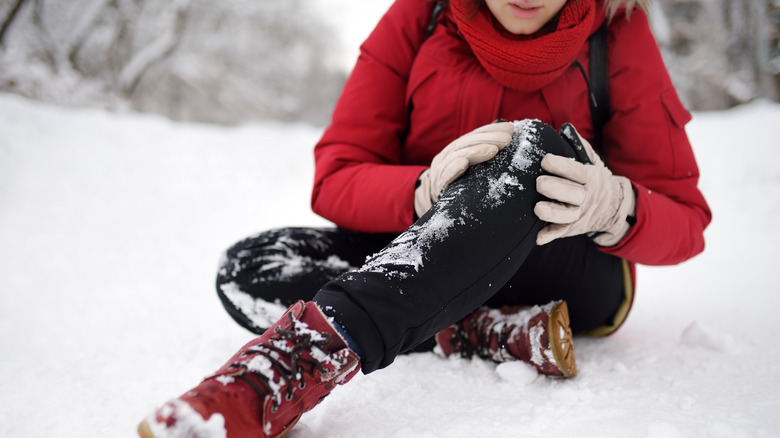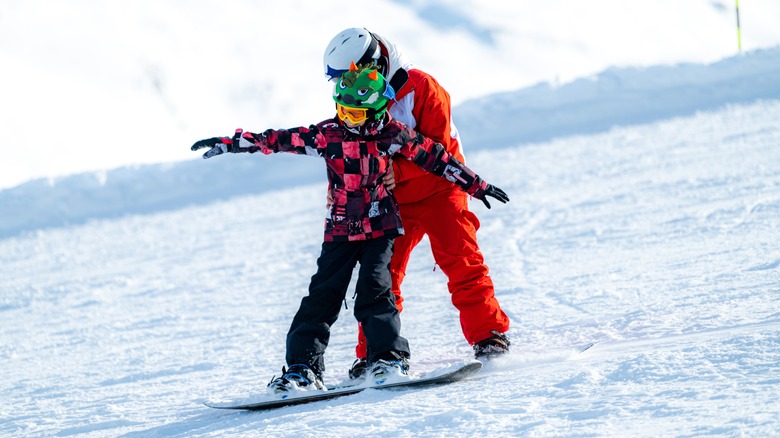How To Avoid Winter-Hazard Related Injuries
Along with cold temperatures, wintertime brings snow, slush, ice, and more. While the first snowfall of the year can have a certain magical energy to it, it also increases the odds of accidents and injuries. Here's how you can help yourself and your loved ones stay safe the next time winter weather rolls around.
As soon as a fresh blanket of snow hits the ground, many people take to their walkways to begin clearing a path. But just as certain exercises require proper form, so does shoveling snow. To reduce the risk of pains and strains to your back, neck, shoulders, and more, Go Health Urgent Care suggests keeping your back straight while shoveling, rather than hunching over. Additionally, experts at HealthDay stress the importance of pushing snow piles rather than lifting them. If you must lift, do so from your knees or hips.
Furthermore, keep shoveling sessions short and sweet. Shoveling smaller amounts of snow on a routine basis is safer than attempting to dig through a massive build-up of wet, heavy snow. This is especially true for people with heart conditions, as the physical strain from shoveling excess snow may increase one's risk for heart attack, reports the Orthopedic & Sports Medicine Center of Oregon. But stepping foot outside, whether to shovel snow or anything else really, can also be hazardous in and of itself during the wintertime.
Wintertime safety tips for sports, driving, and more
"If someone slips or falls on icy surfaces, an injury can range from spine and musculoskeletal injuries — such as sprains and broken bones — to head and brain injuries — such as a concussion," Dr. Mahmood Gharib, a physiatrist at the University of Minnesota Medical School in Minneapolis, told HealthDay. To reduce the risk of taking a tumble, experts suggest taking smaller steps, much like a penguin. With feet spread apart, walk with small, flat-footed steps while keeping your center of gravity above your feet. Keep your knees slightly bent and utilize your arms for added balance rather than tucking them in your pockets, advises the Orthopedic & Sports Medicine Center of Oregon. Additionally, grab onto handrails when available.
When on the road, proceed with caution and drive more slowly during the winter months, cautions Go Health Urgent Care. Remember to keep seatbelts and headlights on. Additionally, dress for the season. Hats, scarves, gloves, and a thick coat can help stave off injury from frostbite or hypothermia. Lastly, take precautions when engaging in wintertime activities. For those who enjoy skiing or snowboarding, wear a helmet and consider signing up for lessons if you're a first-timer (per CNN). For those who prefer ice skating, be sure to skate with the crowd rather than in the opposite direction. When sledding, remember to position yourself feet forward, be on the lookout for bystanders, and roll off and away from the sled if at risk of a collision.


